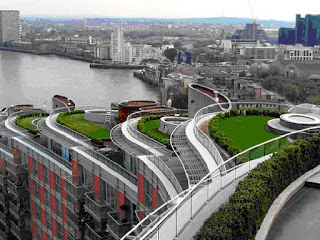A
lot of people just love filling the walls, the houses, the parks and every
other public place you can think of, with all kinds of colorful graffiti
drawings and quotes or just random words or sayings. The most used graffiti
materials are in particular spray paints and marker pens. Besides the fact that
graffiti is not actually legal and it’s considered a vandalism, spray paint
causes a lot of damage to the enviroment. Spray paint contains a lot of toxic
chemicals, which causes damage and eats through things like plastic, so they
also get destroyed. Graffiti is also bad for the enviroment because it is a
visual pollution to some people and it creates eyesores in the public.
Therefore fans of wall painting can
start using the so called “moss graffiti”, “eco-graffiti” or “green graffiti”,
which can also be considered another form of guerilla gardening.
For those who don’t know, guerilla
gardening is basically planting on land, that doesn’t belong to you, without
the owners permission. Guerilla gardeners are doing that mostly for making
neighborhoods more attractive and prettier, and they also want to draw
attention to issues and urban blight. They usually work at night, so people
won’t discover the responsible and to surprise people, but some guerilla
gardeners work at daylight, to teach their community to care about the
enviroment and to inspire them.
Now that everything is explained and
hopefully understood, I will write down everything there is to know about moss
graffiti. Spray cans can be replaced with moss-graffiti. It doesn’t cause
damage to the enviroment and the drawings can look the same, besides the fact
that they’re going to be green and not so colorful like spray cans. Moss
graffiti really is the green thing to do, but it is still best to ask for
permission to the owner, who will probably understand if he is a
healthy-enviroment fan. Here’s a list of what you’ll need and tips:
You
will need:
·
about a handful of moss;
·
2 cups of buttermilk;
·
2 cups of water or beer;
·
½ teaspoon of sugar;
·
a blender;
·
a paint brush.
Easy
steps of how to prepare it:
1. Wash the moss as good as
possible and remove all the insects and dirt you can find;
2. Place the moss in small
pieces in the blender;
3. Add all the remaining
ingedients and blend it all together until it becomes smooth like a milkshake;
4. Apply the mixture on the
desired surface with a paintbrush;
5. Check weekly and spray it
with water or apply more moss paint, so it will grow(espacially if the
enviroment you live in is dry).
Learn to be green!
















